Oatmeal is one of the most popular breakfasts in North America. If you are like me, then it is likely that you have tried many different variations of oatmeal as there are, there is surely going to come a time when you realize that your oatmeal is not the desired texture that you want it to be.
While this doesn’t happen as often with oatmeal that you make from scratch, as you have complete control over the thickness and consistency of the oatmeal, this is incredibly common in situations where you are making instant oatmeal or a variant of that.
Luckily for us all here at OatMeals101, we know exactly how to help! We’ve compiled 9 easy ways on how you can quickly and easily thicken your oatmeal.
Easy Ways to Thicken Oatmeal
- Using Thickening Agents
- Using Liquids and Liquid Adjacent to thicken Oatmeal
- Using Fruits and Vegetables
- Using Other Foods in Your Oatmeal
- Use a Blender or Food Processor
- Cook the Oats in Milk
- Use Flour
- Use Cornstarch or Arrowroot
- Use Gelatin
1. Using Thickening Agents
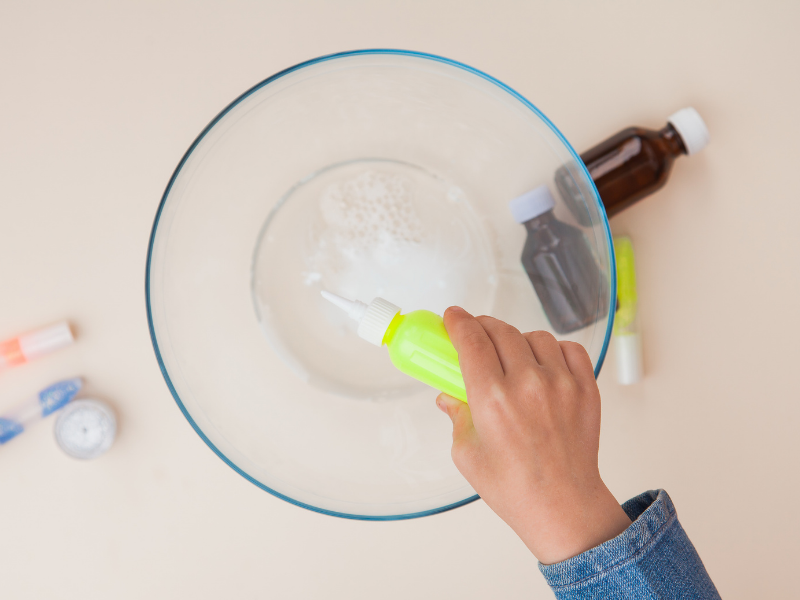
If you are looking for a more reliable way to thicken your oatmeal, there are plenty of thickening agents that you can use.
The most common thickening agent is flour and this can be added in at the beginning or end of the cooking process, depending on what you are looking for.
Adding it in at the beginning will make the oatmeal more dense, while adding it in at the end will give you a thicker and creamier consistency.
Another popular thickening agent is cornstarch. Cornstarch can also be added in at either the beginning or end of the cooking process, but it has one notable difference when compared to flour: it needs to be mixed with a cold liquid before being added to the oatmeal.
This is because cornstarch works best as a thickener when it is heated up slowly. If you were to add it directly to the hot oatmeal, it would not work as well (or possibly not work at all).
If you are looking for an even richer way to thicken your oatmeal, consider using some type of nut butter. This will work best if you mix it in at the end of cooking but be warned that this may change the flavor slightly (although most nut butter is fairly mild).
Get More Ways to Froth Almond Milk Without a Frother
2. Using Liquids and Liquid Adjacent to thicken Oatmeal
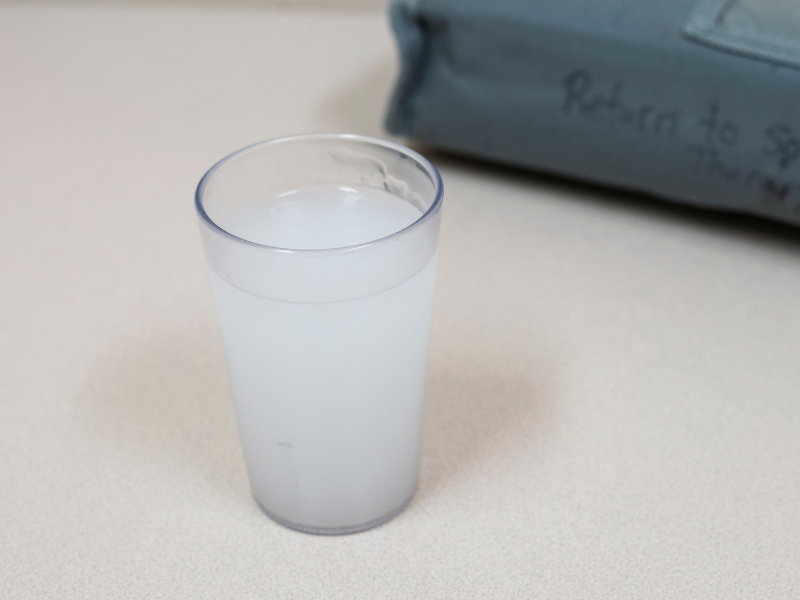
While it is generally true that adding liquids to oatmeal can create a thinner texture, this does not need to be the case.
If you are planning on making your oatmeal ahead of time and want something thicker than normal for when you get up in the morning or later during the day, then there are many different things you can do to change the texture of the oatmeal.
One way that you can add thickness to your oatmeal is by using liquids that are not typically used in oatmeal recipes, such as milk or cream.
These two liquids will make your final product much thicker than if you were to use water or broth, for example.
Another way that you can achieve a thicker oatmeal consistency is by adding ingredients that are adjacent to the liquid ingredients.
This means adding things like oats, nuts, and seeds into your recipe. By doing this, you are essentially making a “compote” out of these other ingredients which will help thicken up the overall dish.
A great way to try this out is by cooking some steel-cut oats on the stovetop. Once they are done, add in some chopped-up nuts, seeds, and dried fruit of your choice.
Stir it together for about 30 seconds, and you will find that your oatmeal has gotten considerably thicker.
Check Out Ways to Transport Cookies Safely
3. Using Fruits and Vegetables
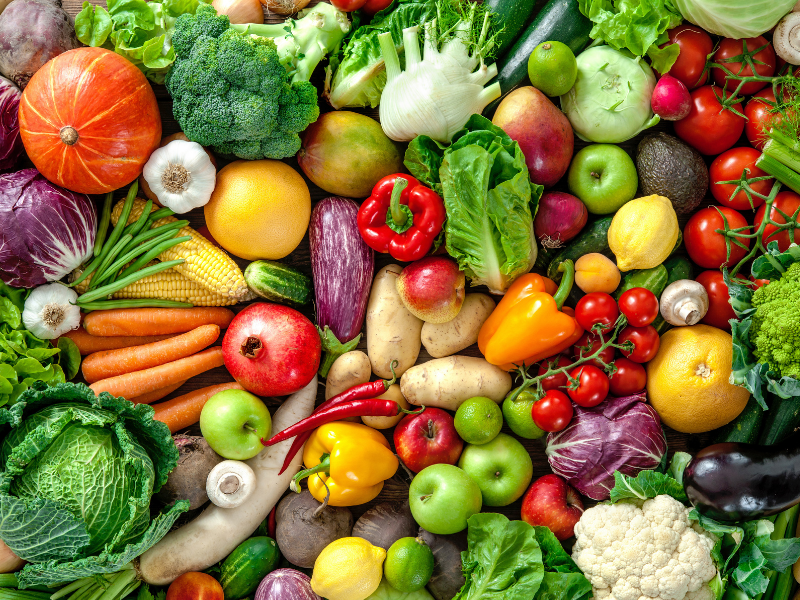
One of the most common ways to thicken oatmeal is going to be by adding fruits and vegetables.
Adding a fruit or vegetable purée can give your oatmeal a soft, chewy texture that you might want in some cases. This will work best if you are using rolled oats as they tend to have more flavor than steel-cut oats.
One way to do this is by cooking the oatmeal in water and then adding a purée of your choice after it is cooked.
This could be a fruit like bananas, applesauce, or pumpkin, or even a vegetable like spinach or butternut squash.
You can also add small amounts of puréed ingredients while the oats are still raw if you would like them to cook into the oats more.
If you are using steel-cut oats, however, we recommend that you only use about half a cup of any added fruits or vegetables so that they don’t turn into complete mush when cooked.
Get More Ways to Cook Ham Without an Oven
4. Using Other Foods in Your Oatmeal
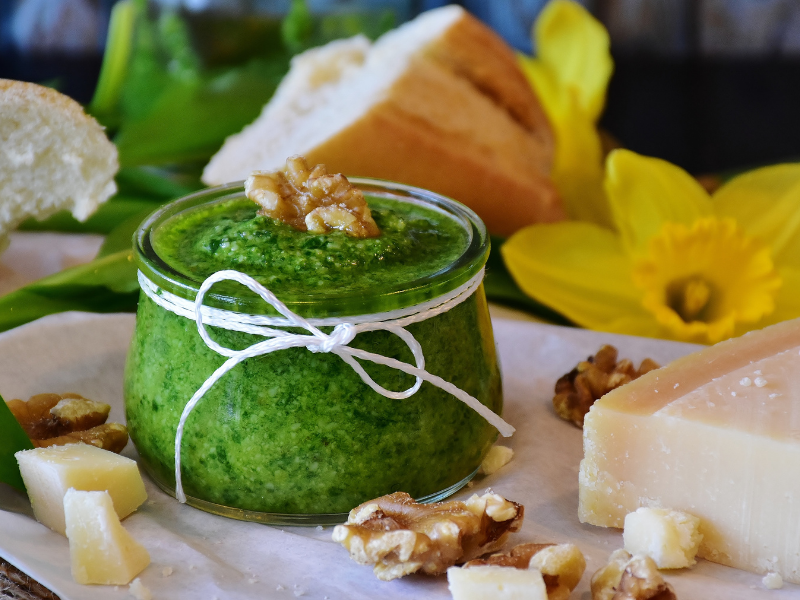
While we have already talked about adding other ingredients to your oatmeal to thicken it up, there are other things you can do as well.
One way is by using foods that are commonly used in baking. This could be something like mashed banana, pumpkin puree, or even applesauce.
These will all add moisture and thickness to the oatmeal. You can either cook them with the oats or add them after the fact.
Just make sure that they are cooled down before stirring them in so that you don’t end up cooking the oatmeal again.
Another thing you can use is chia seeds. Chia seeds work great because they swell up when added to a liquid and create a gel-like consistency.
This can be a great way to thicken up your oatmeal if you are looking for a healthy option.
You can add them either while the oats are cooking or after they are done. If you are adding them while the oats are cooking, we recommend using about a tablespoon for every cup of oatmeal that you are making.
If you are adding them after the fact, then we would suggest using at least two tablespoons per cup of oatmeal.
Get More Ways to Make Carbonated Water Without CO2
5. Use a Blender or Food Processor
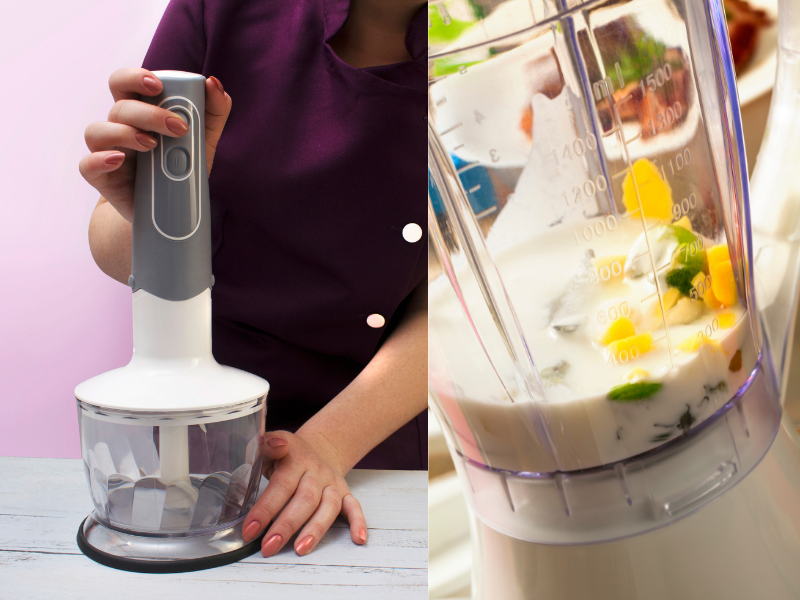
One of the easiest ways to create thick and creamy oatmeal is by pureeing it in your blender or food processor.
This will work best if you are using rolled oats as they tend to have more flavor than steel-cut oats.
To do this, simply add all of the ingredients into one bowl and place the lid on it. Stir the ingredients together until they are well combined, and then blend them for a few seconds to create an oatmeal purée.
If you would like your oats to be creamier, add in more liquid while blending or wait until after you have pureed everything else before adding any additional liquids.
This will help ensure that there is enough moisture leftover from other ingredients so that it does not end up becoming too thin once blended.
It’s important to note that one of the main drawbacks with using this method is that many blenders or food processors do not get hot enough or run long enough to actually cook all of the raw oats which means that some people may still find their final product slightly crunchy.
Check Out Simple Methods to Thicken Cheese Sauce
6. Cook the Oats in Milk
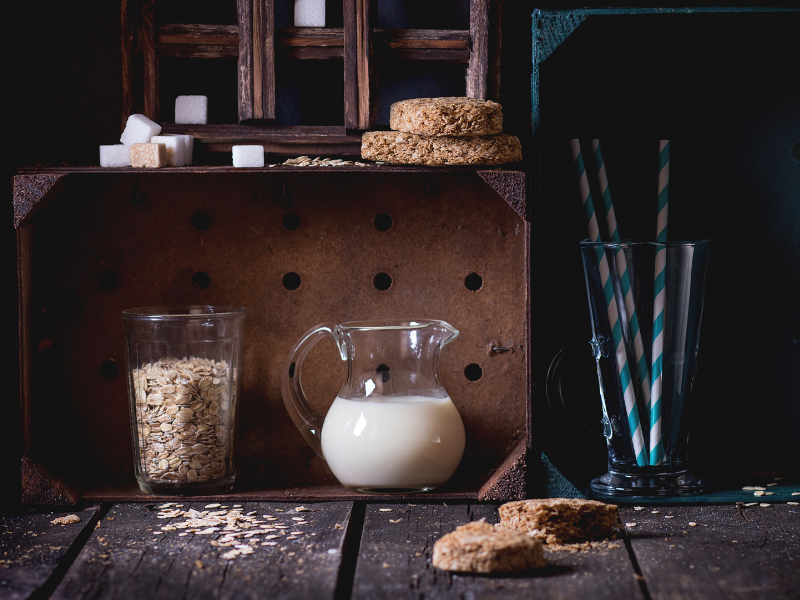
One way to thicken oatmeal without having to add any other ingredients is by cooking it in milk instead of water.
While the outcome will be a bit creamier, you will also have to take into consideration that it is going to taste quite a bit different as well.
To do this, simply cook the oats in milk instead of water and then stir in any additional ingredients that you might want.
You can either cook them on the stovetop or in a microwave-safe bowl. If you are cooking them on the stovetop, we recommend bringing the milk to a low simmer before adding the oats.
Then, simply cook them for an additional 20 to 30 minutes or until they are at your desired consistency.
With microwaves, you can add the oats and milk together in a microwave-safe bowl without preheating anything first.
Then all you have to do is cover it with a lid and heat up on high for about two minutes per cup of oatmeal that you made.
Stir everything well after heating before serving so that there aren’t any clumps left over from the oats cooking unevenly while microwaved.
The main drawback here is going to be cost as most people find themselves having to use more milk than they would when using water if they want their final product thick enough so this could get expensive rather quickly depending on how much oatmeal you like to eat on a daily basis.
7. Use Flour
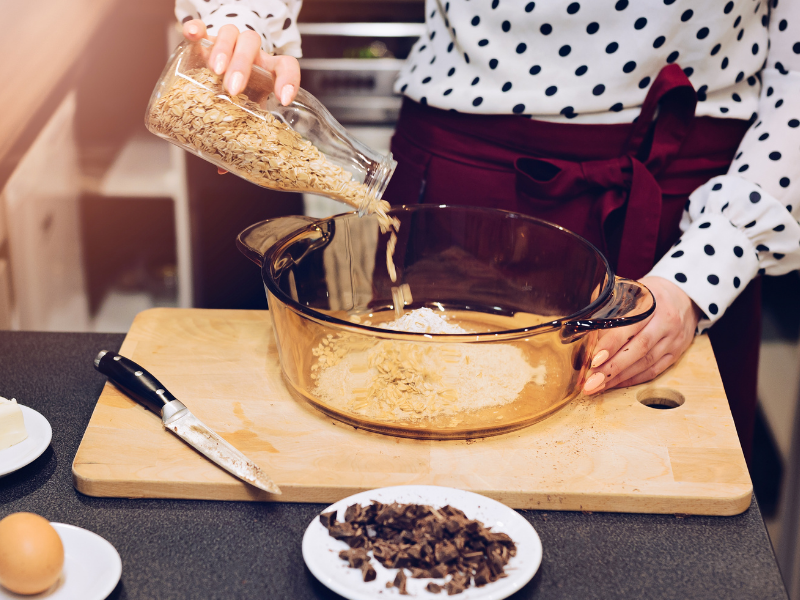
Another way to thicken your oatmeal is by adding in a bit of flour. While this may not be the best option for people who are gluten-free, it can be an excellent choice for anyone else.
To do this, simply add in about two tablespoons of flour per cup of oats that you make and stir well until everything is evenly combined.
This works best when the oatmeal has finished cooking but before any other ingredients have been added to it because adding additional ingredients will dilute the thickening power that comes with using flour which means that your final product may end up becoming too thin instead.
The main drawback here is going to be cost as many people find themselves having to use more than they would like if they want their final product thick enough so this could get expensive rather quickly depending on how much oatmeal you eat daily or what type of oatmeal you prefer.
8. Use Cornstarch or Arrowroot
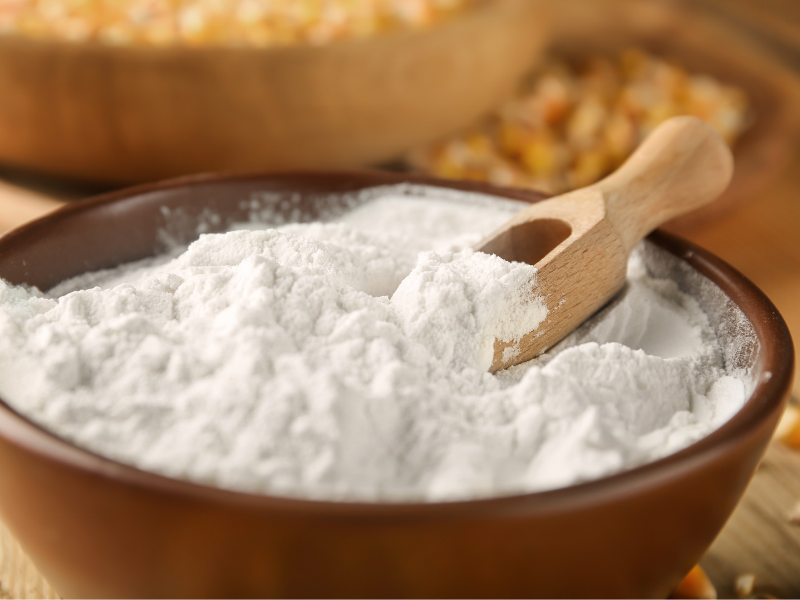
Similar to using flour, cornstarch and arrowroot are both excellent thickeners that can be used in oatmeal.
To do this, add about one tablespoon of cornstarch or arrowroot per cup of oats that you make and stir well until everything is evenly combined.
This works best when the oatmeal has finished cooking but before any other ingredients have been added to it because adding additional ingredients will dilute the thickening power that comes with using either of these two starches.
The main drawback here is going to be cost as many people find themselves having to use more than they would like if they want their final product thick enough so this could get expensive rather quickly depending on how much oatmeal you eat daily or what type of oatmeal you prefer.
9. Use Gelatin
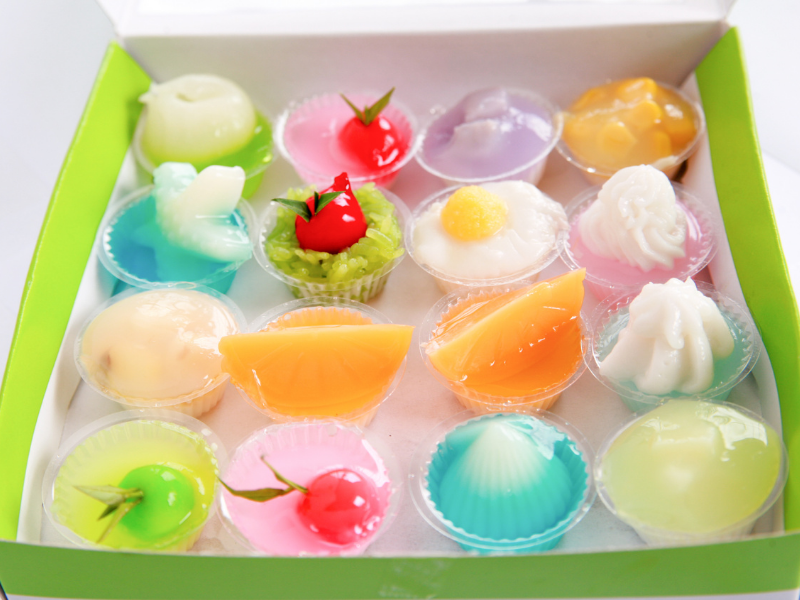
If you are looking for a thickener that is going to give your oatmeal a bit of added stability and creaminess, gelatin is a great option to consider.
To do this, simply add in about two tablespoons of gelatin per cup of oats that you make and stir well until everything is evenly combined.
This works best when the oatmeal has finished cooking but before any other ingredients have been added to it because adding additional ingredients will dilute the thickening power that comes with using gelatin.
The main drawback here is going to be cost as many people find themselves having to use more than they would like if they want their final product thick enough so this could get expensive rather quickly depending on how much oatmeal you eat daily or what type of oatmeal you prefer.
In addition, not everyone enjoys the taste and/or texture of gelatin which means that this might not be the best option for everyone.
You can also use egg yolks for thickening oatmeal and they are considered to be one of the more reliable ways to thicken your oats.
You should try adding them into your dish after any other additions have been made so as not to affect their consistency too much during heating up.
Egg whites on their own do not typically have enough binding power, which means that by using just egg yolks, you can get a thicker product without having to worry about mixing things together beforehand or finding another way around the problem.
How to Achieve Perfect Oatmeal
The steps below are for achieving oatmeal that is the perfect thickness.
- Begin by boiling water in a pot and then add your oatmeal to it, and then stir until it is mixed well.
- Add the desired amount of liquid and then let sit over medium heat until it reduces by about half.
- Continue to cook the o shelled. If desired thickness has not been achieved, add more liquid or cook for longer period of time. You can also add some extra ingredients such as rolled oats, chia seeds, peanut butter, banana slices or even cinnamon.
- Once done cooking, stir everything together and enjoy!
Common Mistakes When Making Oatmeal
There are a few mistakes that you can make when trying to make oatmeal. One of the most common ones is not letting the desired consistency of the oatmeal cook all the way.
If you allow the oatmeal to cook all the way, it will become much thicker and have more of a consistency than you might prefer.
The other mistake that people make is that they don’t let their oats cool before adding milk or any additional toppings, which makes them end up with a lumpy texture for their oatmeal instead of a nice smooth texture.
Conclusion
So, as you can see, there are a few different ways that you can go about thickening your oatmeal if it happens to not be the desired consistency that you want it to be.
While some of these methods may require a bit more effort than others or might end up costing you more money, they all have the potential to help you reach the perfect level of thickness for your personal preferences. So, whichever method you decide to go with, be sure to give it a try and see how you like it!
